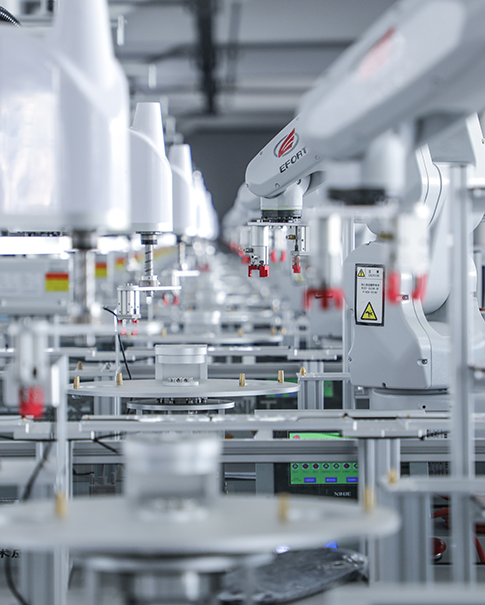When GE Energy unveiled its Essential Insight.mesh wireless monitoring system at the 2008 ISA Expo in Houston, it marked a turning point for industrial asset management. As someone who's witnessed firsthand the challenges of monitoring remote equipment in oil refineries and power plants, I can attest this wasn't just another product launch—it was the solution we'd been waiting for. Traditional monitoring methods had reached their limits. The constant struggle with miles of cabling, the safety risks of sending technicians into hazardous areas for routine checks, and the blind spots in our monitoring coverage were daily frustrations. Essential Insight.mesh changed all that overnight. I remember talking to plant managers at that Houston expo—their eyes lit up when they realized what this wireless technology could do for their operations.
The brilliance of Essential Insight.mesh lies in its elegant simplicity. By eliminating the need for physical wiring, GE solved several problems simultaneously:
First, it conquered the "last mile" challenge in industrial monitoring—those hard-to-reach pumps, motors, and turbines that were either too expensive or too dangerous to monitor continuously. I've seen installations where running cables would have required shutting down entire production units for days. With wireless sensors, these became simple afternoon jobs.
Second, it brought real-time monitoring to assets that previously only got attention during monthly walkarounds. The difference this makes in predictive maintenance is staggering. At one chemical plant I consulted with, they caught a developing bearing issue on a critical pump three weeks before it would have failed—something their old manual methods would have missed entirely.
Third, the system's integration with Bently Nevada's System 1 software created a seamless data flow from sensor to dashboard. No more manual data entry errors, no more lost clipboards, just clean, reliable data where and when you need it.
Let's geek out for a moment on what makes Essential Insight.mesh tick. The system's architecture is a masterclass in industrial IoT design: The wSIM™ sensors are workhorses—rugged enough for offshore platforms yet precise enough to detect subtle vibration changes. Each one acts as a node in a self-healing mesh network, meaning if one path fails, the data automatically reroutes. I've seen these networks maintain 99.9% uptime in environments that would make most electronics weep. The repeater nodes solve the range problem beautifully. In a sprawling refinery or power plant, they create invisible data highways that carry information from the most remote corners back to the gateway. And speaking of the gateway, its protocol translation capabilities mean you're not locked into any single control system—a flexibility that's saved countless headaches during plant upgrades. What often gets overlooked is the system's power management. These devices run for years on batteries thanks to ultra-efficient transmission protocols. At a wind farm installation I supervised, we calculated the sensors would last longer than the turbine bearings they were monitoring!
The adoption stories tell the real success of Essential Insight.mesh. In the oil and gas sector, it's monitoring flare stacks that no technician wants to approach during operations. One offshore platform reduced its confined space entries by 70% in the first year of deployment—a huge win for safety. Power plants are using it to watch auxiliary equipment that previously flew under the radar. A Midwest coal plant identified $250,000 in annual savings just by catching small steam valve issues before they caused turbine trips. Perhaps most impressive are the mining applications. In underground mines where cable damage is constant, the wireless system maintains uninterrupted monitoring of critical ventilation fans and pumps. The mine manager at one site told me, "It's like we've finally turned the lights on in parts of our operation we never really saw before."
Fifteen years after its introduction, Essential Insight.mesh continues to evolve. The recent addition of pressure monitoring capabilities opens new applications in pipeline and compressor monitoring. There's talk of adding corrosion sensors to the platform—something that would revolutionize integrity monitoring in chemical plants. The system's success has paved the way for GE's current generation of wireless solutions, but many plants still rely on these original .mesh installations. That longevity speaks volumes about the quality of the design. As one veteran plant engineer put it, "We've had three control system upgrades since installing these, but the .mesh sensors just keep working like it's still 2008."
Conclusion: A Legacy of Innovation That Still Delivers
Reflecting on Essential Insight.mesh's impact, it's clear this was more than just a product—it was a paradigm shift. It proved wireless could be reliable enough for critical industrial monitoring, changing how we think about plant instrumentation. For facilities still using manual monitoring methods or struggling with unwieldy wired systems, the message is clear: The technology to solve your problems has been here for years. As we move into an era of even smarter plants and more connected operations, Essential Insight.mesh stands as proof that sometimes, cutting the cord is the best way to stay connected to what matters most—your equipment's health and your plant's performance.
 Network Supported
Network Supported